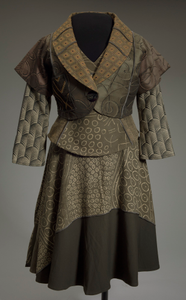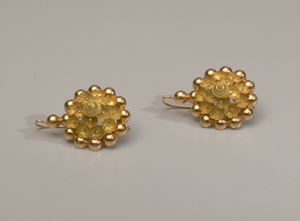Leboullanger, French Cochet Unidentified Woman or Women
Description
The title of this French colonial postcard (GUADELOUPE. - Type n° 7) exemplifies the standard naming structure that categorized “exotic” native subjects in the form of ethnic and occupational “types.” Presenting the image subjects in this way conveyed the perception of them as “tame” colonial subjects capable of assimilation into European ways of life. The colonial postcard, popular in the first two decades of the 20th century, came to represent both the technological triumphs of western photography – in printing and mass production – and the political triumphs of European conquest and expansion. These postcards also promoted tourism to the French Caribbean, painting the region as a safe, favorable, and exotic travel destination.The woman in this image wears a traditional, five-piece French Caribbean formal ensemble called a douillette, which is derived from the grand robe worn by early French settlers. Prior to Emancipation, dress codes required enslaved women to wear a chemise jupe, an informal bodice and skirt ensemble. Douillettes would have been worn by mulattas and free black women. Following Emancipation, black women resisted these old dress codes by donning elaborate douillettes that were previously forbidden. The douillette dress is made of colored or shiny fabric and is worn over a petticoat and accessorized with a satin foulard shawl over the shoulders. It was common for the dress and foulard shawl to match as they do in this image.The ensemble is finished with an ornately tied madras head scarf. Originally produced in the Chennai region of southeast India, madras...
Image
Silver And Photographic Gelatin On Photographic Paper, With Ink On Paper
Collection of the Smithsonian National Museum of African American History and Culture





















